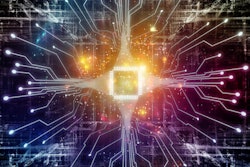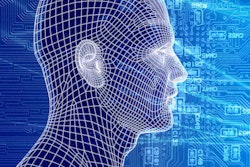
While Hollywood portrays dystopias in which artificial intelligence (AI) has rendered humans obsolete, the truth may not be quite as grim if imaging can harness the power of machine learning, according to a Dutch speaker at the European Society of Medical Imaging Informatics (EuSoMII) Academy 2017 meeting in Rotterdam, the Netherlands.
In his presentation, Who controls patient data in the era of AI: Man or machine? computer scientist Peter van Ooijen, PhD, from the department of radiology at University Medical Center Groningen in the Netherlands, noted that the march toward implementing AI scares even well-known experts, but that finding the right balance would be key to success. He advocates a pragmatic approach to the new aspect of AI in a discussion that is decades old: control of healthcare data.
 Peter van Ooijen, PhD.
Peter van Ooijen, PhD."The word 'control' can mean different things to different people. I hope to provide some insight into the different aspects of control that concern AI and medical data to present a more complete picture of the 'problem,' " van Ooijen told AuntMinnieEurope.com ahead of the meeting, Game Changers in Radiology: A Transatlantic Overview. The event took place on 18 November and looked at the impact of informatics and AI on medical imaging.
While legislation gives a lot of control options to the patient, he noted it was technically impossible to control everything that deep learning does.
"We need to allow some data control by the algorithms," he said. "Philosophically we are inclined to believe that a human being should be in control, but this has been thrown into question among the general public by the monkey that took his own selfie and the autonomous robot that makes paintings that resemble the work of a human artist."
Furthermore, although ownership should be linked to control, this can be a muddy area when the owner voluntarily relinquishes control to someone -- or something -- else. This can happen when collected health data is sent into the cloud either by the healthcare provider or the patient.
"There is no way of knowing what will be done with that data. This will be one of the major issues in the coming years: How are we going to keep track of data and how are we going to register what data can be used for which purpose?" he asked.
But just how far away are we from machines controlling patient data in the routine clinical setting -- and is this scenario desirable and safe?
According to van Ooijen, we're not far from this reality at all. In some cases, machines are already controlling part of the data, he noted, pointing to automatic routines for computer-aided detection and diagnosis.
"These systems now already preprocess the data to tag anatomy or to detect tumors, for example. These algorithms will increasingly become more self-learning," he said.
Humans and computers will share joint responsibility, each controlling part of the data, depending on its purpose, which, in an ideal scenario, should be determined and registered in advance, he said. Such data management and control will increasingly become part of the daily work of all radiologists.
"Data handling and control is a very sensitive topic; public opinion tends to be the driver for legislation, which is not always in the best interests of the patient or research projects," he said.
Although it will be impossible to control everything in AI, human control still will be needed at a legal and practical level in many cases.
"While management of the data including analysis, evaluation, and statistics can be left to AI, control over who has access to what data should be with the human," he said.
Editor's note: Over the next week, look out for two further articles from the EuSoMII Academy 2017 meeting on AuntMinnieEurope.com. The event attracted over 150 attendees was jointly organized by EuSoMII, the Society for Imaging Informatics in Medicine (SIIM), and Erasmus MC in Rotterdam.



















